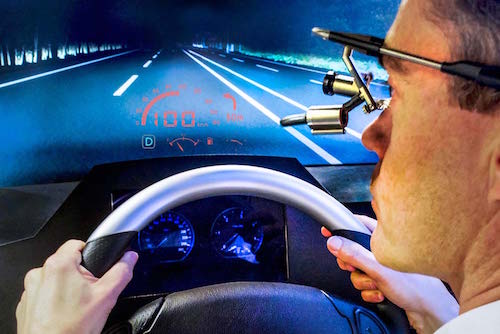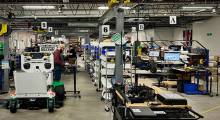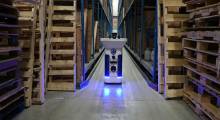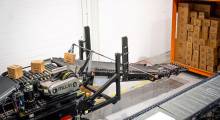ANSYS took a major step to firm up its autonomous vehicle testing position with its recent acquisition of OPTIS, which fills in an important gap in the area of optical sensor and closed loop simulation tools.
The OPTIS platform is used to simulate sensors, including lidar, cameras, and radar. Yet the tool set also plays another very important role: It encompasses a photorealistic virtual reality and a closed-loop simulation platform that will allow makers of this new class of vehicles to simulate the actual environments, from road conditions to weather, even traffic patterns on streets.
 OPTIS’ optical sensor and closed loop, real-time simulation capabilities validate the safety and reliability of autonomous vehicle testing. Image Courtesy of ANSYS
OPTIS’ optical sensor and closed loop, real-time simulation capabilities validate the safety and reliability of autonomous vehicle testing. Image Courtesy of ANSYS“If you can have a virtual reality space in which you can represent weather, cars, traffic, and all the different sensors in a car, you can start automating virtual execution of these scenarios,” explains Eric Bantegnie, ANSYS vice president and general manager. The ANSYS portfolio addressed the physics representing sensors and the millions of lines of embedded software code in these systems, but it lacked a platform for all the real-time simulations to come together. “OPTIS is the real-time simulation backbone that is going to wrap together all the ANSYS physics—it’s the integration mechanism for testing these vehicles,” he explains.
ANSYS, which has been aggressively building out this part of its simulation portfolio, sees a huge opportunity to provide multidisciplinary and cross-functional tools that will accelerate the delivery of autonomous vehicles. In addition to its OPTIS acquisition, the company acquired KPIT Medini Technologies in 2016, a provider of systems safety analysis solutions.
Prior to becoming a mainstream fixture on the roads, autonomous vehicles need to go through unprecedented amounts of testing—what experts estimate might be billions of miles of driving—a feat that is simply not possible with traditional on-road approaches. According to a report published by Rand Corp., autonomous vehicles have to be driven hundreds of millions of miles and sometimes billions of miles to adequately demonstrate their reliability in terms of fatalities and injuries. Given the vastness of that charter, the report concluded that it would take autonomous car companies tens or even hundreds of years to accomplish proper testing with traditional methods, putting the onus on the industry to come up with innovative methods for testing and demonstrating reliability and safety.
Along with ANSYS, other simulation and hardware vendors have stepped up to the challenge, introducing new capabilities and making acquisitions in the area of autonomous vehicle simulation. For example, Siemens PLM Software acquired TASS International, which provided technology for its Simcenter Prescan simulation environment used for physics-based simulation of raw sensor data for potential driving scenarios and traffic situations. For its part, NVIDIA recently announced Drive Constellation, a cloud-based system for autonomous vehicle testing that employs virtual reality to simulate a vehicle’s cameras, lidar, and radar as well as the software stack and processes.
 OPTIS delivers physics-based optical simulation solutions for lidar, cameras, and radar. Image Courtesy of ANSYS
OPTIS delivers physics-based optical simulation solutions for lidar, cameras, and radar. Image Courtesy of ANSYSWhile virtual testing won’t be a wholesale replacement for physical test drives, ANSYS says simulation will greatly accelerate the timeline for autonomous vehicles to hit the road. “We’re seeing customers making prototypes and driving them in cities to acquire data, but simulation helps multiply that data exponentially to test all possible combinations and parameters,” Bantegnie says. “The interaction between physical road testing and virtual road testing is becoming a reality.”
Watch this video to learn more about OPTIS and where it fits into ANSYS’ broader simulation portfolio.
About the Author
Follow Robotics 24/7 on Linkedin
Article topics
Email Sign Up
















